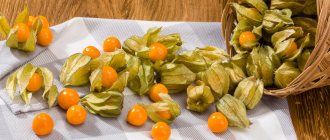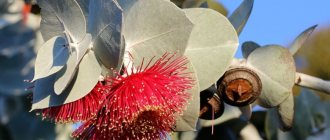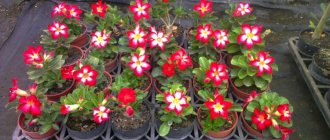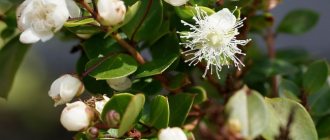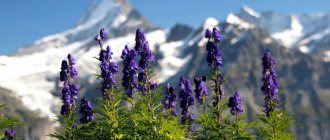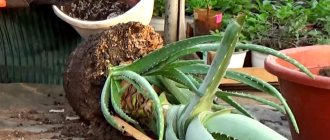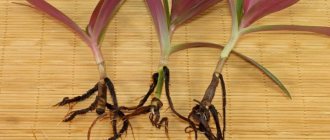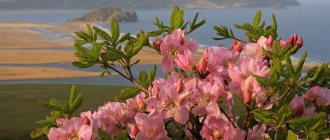Description of the plant
Acacia is an evergreen tree, the height of which is about 25 m. Its trunk can reach about 120 cm in diameter. Moreover, some types of acacia are represented by shrubs. The branches are decorated with lush foliage with a feathery shape. The leaves are arranged whorled or alternately. Some plants have lanceolate, needle-shaped or widely spread petioles on their branches instead of foliage.
During flowering, inflorescences are formed on the branches, shaped like clusters or panicles. They include white, yellow or cream flowers. The bell-shaped calyx of the flowers consists of five petals. White or yellow flower whorls with 4 or 5 wings are tube-shaped.
Acacia is part of the Legume family. This is precisely the reason why, in place of pollinated flowers, oblong-shaped pods, which are fruits, are formed. In different species of such a plant, the fruits differ from each other, for example, they can be straight, flat, curved, large, opening, cylindrical or closed.
You can often see thorns on the branches of acacia. However, they are most often found on trees and shrubs growing in the south. The root system of such a tree is very powerful. In this case, the central root goes deep into the ground, and the lateral ones are at a shallow depth. The bark of a young tree is silver in color, but over the years it turns brown.
Where does it grow in Russia?
In Russia, white acacia began to be cultivated in the mid-19th century. It was brought to Odessa in 1822, from where it later spread throughout the country.
Nowadays, acacia feels great on:
- the south of the Far East;
- Stavropol region;
- Kuban;
- Lower Volga region.
Reference! Some acacia trees can grow in northern regions, but in very severe winters they freeze.
Types and varieties of acacia with photos and descriptions
Acacia is known for its beauty and diversity of species. It grows on every continent and is widely used in medicine.
We have selected for you the most interesting varieties of acacia with the biological names of each species, detailed descriptions and large photos of the varieties.
White
White acacia (Robinia) can reach a height of 12 m. The lifespan of the tree is 50 years. The active growth phase lasts up to 30 years. The most suitable soil for growing is moist sandy loam.
This type of acacia loves warmth and does not tolerate severe frosts, especially young shoots. However, it tolerates pruning and replanting well.
In central Russia, the tree begins to bloom in June, in the south - in the second half of May. Flowering duration is 14–20 days. The abundant secretion of nectar continues for up to 2 weeks, and then subsides. One flower blooms for less than a week.
This honey plant produces 1000 kg of honey per 1 hectare. However, the honey productivity indicator depends on the age of the trees: from 15 to 25 years it increases by 60%.
White acacia honey has the following characteristics:
- transparent watery color;
- subtle pleasant aroma;
- delicate taste;
- long-term lack of crystallization (staying in a liquid state for many years).
As it thickens, small crystals form and the honey takes on a whitish hue.
Leafless
The shrub grows no more than 2.5 m. The inflorescences are painted in a bright yellow hue. The tree's natural habitat is considered to be Western Australia.
Armed
Armed acacia (lat. Acacia armata) grows up to 3 m. It always grows several flowering branches with down. The leaves are oval-shaped and dark marshy in color. Sometimes they shimmer with silver reflections. The flowers are yellow and grow singly. This plant can be found in countries such as China and India.
Acacia armata has several flowering branches with fluff
Tree-like
Or Yellow Acacia (Caragana arborescens) is a shrub or dwarf tree reaching a height of 4 to 7 meters.
In Russia it is known as “gorokhovnik”. The leaves consist of 5-7 pairs of leaflets located opposite each other.
The flowers are bisexual and belong to the moth type. Quite large. They have a yellow corolla.
In nature, Caragana arborescens can be found in the forests of Siberia, Altai, the Southern Urals, Kazakhstan and Georgia.
Longifolia
This tree grows up to 10 m. Its feature is its accelerated growth. In a few months the plant grows a couple of meters. It reaches its maximum height in less than 10 years. The tree is common in Australia and America.
Golden
Small, only up to 12 m in height, these trees are immediately noticeable. Golden acacia (Robinia pseudoacacia Frisia) has several trunks and beautiful light yellow elliptical leaves. On curved, zigzag, thorny branches, foliage appears late, almost before flowering: in late May - early June.
This tree was first discovered in Holland in 1935. It blooms with white fragrant inflorescences up to 20 cm in length, the fruit is brown and flat. The leaves are imparipinnate and alternate, from 7 to 19 pieces per petiole.
This acacia does not require care, although it prefers humus, dry soil. In wet and heavy soil it may suffer from frost and die.
Twisted
One of the brightest representatives of American acacias, which gardeners have long been successfully trying to grow in more severe climatic conditions. The tree itself grows small - up to 5-6 m in height. At the same time, its flowering crown is capable of creating large “canopies” 13-15 m in diameter. The bark on the tree has an extremely rough structure and is colored brown or gray.
All inflorescences on the tree are attached with tassels to a special stem. Each cluster of inflorescence has 8-12 small yellow flowers. The leaves have an unusual shape and are attached to the stems in the form of a spiral, arranging their wide parts in a chaotic manner, as a result of which acacia got its name.
Crooked acacia needs proper planting. It is important for her to prepare the soil by mixing it with sand. For good germination of the root system, no other crops are planted within a radius of 2-3 meters around the seedling. The first few years it needs to be tied up and strengthened with sticks or fastenings. It is necessary to fertilize the soil of a young acacia with liquid diluted chicken manure.
It is best to carry out such fertilizing in the warm season - when strong growth and strengthening of the crown is noticeable. This will help the tree adapt faster and develop a root system. During the period of fertilizing and fertilizing, it is necessary not to forget about abundant watering so that mineral microelements are better absorbed into the soil.
Willow
Willow or willow acacia reaches a height of up to 8 m. The leaves have an oblong and elongated shape. They grow quite densely, creating abundant shade below the tree. The shape of the crown is very similar to that of a tree.
The flowers have a pleasant smell and appear in the form of yellow fluffy balls, which very much resemble silver acacia in appearance. Ripe seeds are always very dark, even black. The homeland of this species is Australia, but it can be found in absolutely any area of an avid gardener.
Willow acacia prefers a good and spacious habitat where it will have plenty of room for its long branches to grow. It easily survives strong winds or climatic precipitation. It is not afraid of severe frosts and quickly recovers after a harsh winter. To care for it, it is necessary to create the correct crown in time, which will allow the tree to develop correctly in the future.
Willow acacia loves abundant watering in the warm season. Moist soil will allow it to bloom well. This type of acacia can be planted near artificial ponds, rivers or swampy soil. When planting in the hole, it is necessary to add sand, peat and lime - this will help the willow acacia to develop better and receive useful substances.
Karagana
This is a small bush or tree. Yellow acacia (shrub) is found along the banks of rivers and lakes. The plant can reach 7 m in height, although it usually grows up to 2-4 m. Thin shoots, pinnate and oval leaves. In autumn, the foliage changes color from green to yellow.
The shrub is characterized by relatively low growth from 2 to 4 and up to 2.5 m in width. Gray-green trunk, branched and thin shoots. In May-June, small yellow flowers with a unique aroma appear. Green space tolerates any soil well, but the best option would be a sunny area with sandy soil. Caragana is resistant to frost, winds, and storms.
Caragana tree for the garden
Attention! It is recommended to plant the tree in the fall so that it takes root and adapts before winter.
The shrub needs to be pruned from the second year of life, when it fades. Fertilize it from March to August twice a week. The plant tolerates excessive moisture worse than drought.
The plant is used to decorate gardens, parks, and other cultural sites. The bush helps strengthen embankment slopes and protect the soil from weeds. The vine is ideal for weaving baskets. With the help of shrubs, designers create beautiful compositions; a hedge looks especially elegant.
Red
Acacia oxycedrus is a small shrub up to 2 meters high.
The flower heads of this plant are colored in colors ranging from deep yellow to pale yellow.
The seeds reach up to 10 cm in length and up to 6 cm in width. In nature, Red Acacia can be found in North America.
Chinese
Chinese or Farnese acacia is a large and voluminous shrub that can reach up to 9-10 m in height. It has small and small leaves that form neat pairs and form all the foliage on the tree. It gives all its vitality to fluffy and colorful yellow flowers.
During the flowering season, they emit a delicate aroma that is reminiscent of both raspberries and violets. The tree likes to live in warm regions, where warmth prevails and there are no severe frosts from October to March.
Chinese acacia will decorate the garden of avid lovers of growing exotic varieties of acacia. This species needs good lighting and does not tolerate proximity to other tall and branchy trees. Farnese absolutely withstands heat and summer drought.
Additional watering will not harm the tree only during the period of active flowering. It is important to fertilize the soil in the spring with additional peat and organic fertilizers. If the cold season promises to drag on or threatens severe frosts, the tree is additionally insulated using film or burlap.
The root system can be preserved using fallen leaves, which are placed closer to the tree trunk. Rotten leaves will be a good fertilizer for Chinese acacia.
Sticky
Tall acacia, reaching 10-11 m in height. At the same time, the diameter of the tree's trunk remains quite small, only 30-35 cm. The entire trunk is completely covered with rough, dark-colored bark. Acacia took its name from its sticky shoots, which are made sticky by the juice and jelly-like liquid found in the stalks.
The leaves of sticky acacia are quite large and long, reaching up to 15-20 cm. Flowering occurs in small pink buds. There can be from 8 to 15 pieces on a brush.
Sticky acacia, like pink acacia, easily tolerates climatic fluctuations and quickly adapts to the environment. To plant it, you need a strengthened and strong seedling, which is grown in greenhouse conditions throughout the year.
This will help the tree adapt to the soil faster and develop a strong root system. Sticky acacia responds well with lush flowering to mineral fertilizers, which can be given several times a month in the warm season.
Watering a tree is not important. It is best to do this rarely, when the weather is really hot outside and the soil becomes dry and lifeless.
Crimean
A shrub characterized by leaf fall. The height is 12 m. The trunk has a hard bark with intricate patterns. The leaves are sinewy, making them look knitted. At night the leaves are folded. The flowers have a delicate and sweet scent.
Crimean acacia grows in the south of Russia and Ukraine, the Caucasus and Asia.
Myrtifolia
This shrub reaches only a couple of meters in length. The color of the inflorescences is beige or pale yellow. The bush blooms in winter and spring. Flowers are yellow or beige. The plant is common in Australia.
New Mexican
Robinia neomexicana is a small tree or shrub reaching a height of 2 to 8 meters.
The shoots have awl-shaped spines with gray pubescence. The leaf shafts also have a similar configuration.
The leaves of this plant consist of small leaflets ranging from 9 to 15. They are elliptical in shape and reach a length of 4 cm.
The flowers of the plant are small in size, up to 2.5 cm. They are white or pale pink in color.
In nature, Acacia New Mexicana is found in North America, in the states of Colorado, Texas, New Mexico, California and Arizona.
Nile
Nile or Arabian acacia grows in the form of a shrub or low tree, reaching 4-6 m. The leaves grow chaotically, but have a certain order in setting. The inflorescences resemble a spikelet, from which a flowering ball of yellow and white colors subsequently appears.
On the branches of the Nile acacia you can find triple sharp thorns. Gum is extracted from the bark of the tree for medical development. The bark has an earthy tint, which may change to a grayer color as the tree ages.
Growing Nile acacia on your own plot is quite painstaking. The tree is afraid of extreme cold, as it is a tropical plant. To get a strong and healthy acacia, you need to take care of its insulation. This is especially true for the cold season.
For the first few years, it is better to grow a tree seedling at home or in a greenhouse, periodically hardening it off by placing it in cooler air for a short time. After planting in open ground, the tree must be insulated using improvised means and fallen leaves. Nile acacia does not need fertilizing, pruning or abundant watering.
Sandy
Sand acacia is a bush or small tree, the height of which varies from 1 to 8 m. The leaves are feathery, pinnate, and have a spine at the tip. The inflorescences grow in clusters and are colored purple. The plant is common in China, Iran and Central Asia.
Pink
Acacia with a wide crown and high trunk. Capable of reaching from 8 to 12 m in height. Its flowers are bright and pink, which merge into a lush inflorescence. They gave the name to this type of plant. The tree has almost no aroma during flowering, sometimes it is barely perceptible, but this happens during a period of abundant flowers.
Pink acacia has quite massive and large white thorns. However, upon contact with them, it turns out that they are very soft, and sometimes even fluffy. Pink acacia can even bloom twice a season if the climate and early warm spring are favorable for this.
Growing pink acacia will not pose much difficulty for gardeners. This type of acacia is the most unpretentious and resistant to various temperature fluctuations or precipitation. It has long been noted that the tree easily tolerates severe frosts down to -30 C.
It also easily copes with abnormal heat, which can last for several months in the summer. This decorative tree will easily decorate any area and delight you with lush flowering without the gardener’s unnecessary and painstaking work. It does not require abundant watering, fertilizer or crown insulation in winter.
Locust
White acacia or Robinia false acacia was brought to Europe from North America.
She successfully acclimatized and became in demand in the middle zone. This type of acacia in the form of a tree or shrub is planted in flat areas with a lack of moisture, because the plant:
- drought-resistant;
- strengthens the soil;
- protects other plantings from the wind.
Attention! White acacia grows quickly. In a couple of years you can improve a wild steppe area with it.
Description:
- height - up to 20-25 m;
- crown - openwork, flat;
- leaves - thin, oblong;
- green color is pale, with a silvery tint;
- spine length - 4-5 cm;
- flowers - white or cream;
- blooms in April-May, with a sweet aroma.
Attention! The tree reaches its maximum height in regions with warm climates. An important condition is sufficient hydration.
Plantings of such plants look decorative. In addition, their wood is hard, strong and not prone to cracking and rotting. Such raw materials are valued at the level of ash or oak. Wood is used in carpentry because it is easy to polish and does not lose its presentability when exposed to sunlight.
White acacia has several subspecies that differ from each other:
- New Mexican;
- Sticky;
- Stubble-haired.
The differences between them lie in some structural features of the leaves and shoots. In terms of height, bristle-haired Robinia is the lowest, no higher than 3 m. It has purple or lilac inflorescences. The rest of the trees are white.
Silver
Acacia dealbata is an evergreen tree up to 10 meters high. In Russia it is known as mimosa.
The trunk is covered with smooth bark. The branches have a white coating.
The leaves are bipinnate. They have an ashen tint, for which acacia got its name. The flowers are spherical heads with a diameter of 4 to 8 mm, with a pleasant smell.
Silver acacia grows in Australia, its historical homeland. Also common in countries with a tropical climate - West Africa, India, China.
Boxwood
This bush reaches a height of 4 m. The inflorescences are spherical, painted in a lemon shade. The seeds grow in pods. The length of the seed is 7 cm and the width is less than a centimeter. The tree grows in Australia and northern America.
Mixed
The height of this shrub is 15 m. The flowers are small and grow in clusters. This variety grows in Hawaii and other Pacific Islands.
Farnese
The shrub was zoned for the Black Sea coast of the Caucasus in the 30s. XX century The average height is 2-4 m, but can stretch up to 6 m. The bark is gray-brown in color, the shoots have a broken shape and barely noticeable pubescence. The pinnate leaves are divided into 2-8 branches, covered with 6-20 gray-green leaves 2.5-5 mm long. The stipules have sharp spines with brown tips.
Acacia farnesiana
The variety is famous for its fragrant flowering. An orange or dark yellow flower with a diameter of 1 cm. The corollas of five fused petals are pubescent. The fruit is a cylindrical bean, indehiscent, with 4-5 smooth dark brown seeds inside. It usually blooms in October-December, but in garden culture a form is grown that blooms twice a year.
Bristle
This name refers both to a tree-like shrub, reaching a height of more than 2 meters, and to a tree, which, depending on the growing zone, can reach from 15 to 20 m. A powerful root system and strong prickly zigzag branches make the plant wind-resistant. These types of acacia bloom with beautiful large flowers of purple or pink color without aroma, collected in inflorescences of 3-6 pieces.
The plant got its name due to the fact that its shoots are covered with reddish bristles. The leaves are dark green in spring and summer and yellow in autumn. If such an acacia grows in the garden, it attracts attention with its large and bright flowers.
Does not require additional care, prefers a quiet and sunny place, easily tolerates dry summers. Even poor soil is suitable for it.
Landing
There are two methods of propagation - by seeds (germination in a greenhouse) and by root shoots.
The second option is used more often because it is faster and simpler. You should begin preparing for planting by choosing a location. To do this, it is useful to know the preferences of Robinia:
- the tree loves sunlight, so it is recommended to plant it in open areas;
- false acacia tolerates air pollution well, and it is suitable for landscaping areas in cities and regions with poor ecology;
- the plant is frost-resistant: it can be planted in temperate climates, because adult specimens can withstand temperatures down to -35 ° C;
- reacts painfully to cold winds and drafts;
- undemanding to soil, but prefers light soil (with no or minimal amount of clay) and does not tolerate stagnant water.
Planting and caring for white acacia, the photo of which does not convey all the beauty of the tree, is not particularly difficult. The climate should be taken into account: if the region is characterized by northern winds, then it is recommended to plant white acacia in a place protected from them. For example, behind the wall of a house or trees with a dense crown.
Mature trees usually produce basal shoots. It is enough to dig up the shoot and plant it in a new place. To do this, make a small hole, fix the plant in it and spill the soil. Very soon the seedling will take root and begin to grow quickly.
White locust does not like turfed soil. Therefore, the root area must be weeded, removing weeds with long roots, and mulched. For the same reason, it is not recommended to plant the tree in the vicinity of fruit trees that have a developed root system.
It is a little more difficult to propagate Robinia false acacia from seeds. The beans ripen towards the end of November, after which they are collected and stored in paper in the refrigerator. The best time for planting is spring.
Seeds must undergo pre-sowing treatment: scalding with boiling water followed by immersion in cold water for 12 hours. Then they are planted in loose soil or a greenhouse. The optimal temperature for the development of young white acacias is from 22 °C to 25 °C. By the end of the year, the seedlings reach 1 m. Next spring they can be transplanted to a permanent place.
The distance between planted seeds should be at least 20 cm.
Honey production of acacia
The honey productivity of acacia largely depends on the weather conditions that accompany the flowering period. In hot sunny weather, it decreases significantly, and in cloudy and rainy weather, on the contrary, it increases, and can reach 5 kg of nectar from one bee colony. In cool weather, the plant blooms several days longer. The most intensive honey production occurs on the 5th day of flowering of each individual inflorescence.
An average of 500–1000 kg of honey is obtained from 1 hectare of white acacia.
Due to the short flowering period, bee colonies do not have time to gain strength, and therefore the honey productivity of one family is up to 10 kg of honey. To increase this figure to 50 kg, the beekeeper must resort to the following measures:
- Organize outdoor wintering for earlier flight.
- Observe the strength gain in each individual socket.
- Before mid-May, make layering on the old queen, separating 3 hundred frames (one of them will be brood).
- Separate nests without queens, thus strengthening each bee colony for maximum nectar collection.
Such layerings are then used on the sunflower seed, since by that time they have time to develop and gain strength.
The highest quality honey is obtained from white acacia. Its crystallization occurs slowly, due to which it remains liquid for a long time. It has a yellowish-transparent hue and a delicate aroma. After crystallization, it acquires a whitish tint and a fine-grained consistency.
Acacia honey has a mild, pleasant taste and has healing properties.
Bush caragana, or Russian (lat. C. frutex)
A shrub up to 2 m high, sending out many shoots, from which brooms and brooms are made. Also known as dereza or chiliga. The branches are thin, brown, yellowish-gray or dark gray-green.
The leaves are palmate. Four leaflets 6-10 mm long and 3-5 mm wide, oblong-ovate-lanceolate, smooth or covered with small hairs, dark green on both sides.
The leaf petioles and stipules are covered with spines.
The flowers are bright yellow, solitary or grow together in 2-3 pieces. The corolla is 2.2 cm in size. The fruits are cylindrical, 2-3 cm long. Although the plant blooms beautifully from May to June, it is rarely used as an ornamental.
In the wild, Caragana frutex is distributed in Kazakhstan, Kyrgyzstan, the Chinese province of Xinjiang, Bulgaria, Romania, Moldova, Ukraine, and Russia.
On the territory of the Russian Federation, it grows in the republics of Dagestan and Karachay-Cherkessia, Krasnodar and Stavropol territories, as well as in Siberia. It prefers steppes and dry forests, “climbs” to heights from 1000 to 2500 m, and often forms dense thickets.
Caragana shrub (Russian)
Medicinal properties and contraindications of acacia
When acacia is mentioned as a medicinal plant, they mean white robinia. Its main active ingredient is robinin glycoside. It has a hepatoprotective effect and reduces the level of nitrogenous substances in the blood during developing renal failure. More than a dozen different flavonoids have been found in the flowers of the plant, some of which are included in anti-hangover tablets.
Robinia essential oils are used in perfumery. The unripe fruits of the tree are a source of the antioxidant quercetin, and the bark contains more than 7% tannins, which are effective in the treatment of bacterial infections. When the bark is damaged, silver acacia releases gum, which consists of 76% arabana polysaccharide.
Acacia flowers are used in folk medicine due to properties such as:
- antipyretic;
- antispasmodic;
- choleretic;
- diuretic;
- astringent.
Acacia honey, almost white from Robinia and lemon yellow from Caragana receives very flattering characteristics from beekeepers, doctors and lovers. It has a restorative, sedative and antimicrobial effect when taken orally, and also heals wounds, eczema, and ulcers externally. Inhalation of an aqueous solution of honey is recommended for inflammation of the upper respiratory tract.
When using Robinia as a medicinal plant, you should remember that its seeds, bark and roots are poisonous. The root is especially dangerous because it has a similar appearance and smell to licorice. Failure to comply with dosages can lead to poisoning, accompanied by a sharp drop in blood pressure. Treatment with this plant is contraindicated for pregnant women, breastfeeding women, children under 12 years of age, and persons with individual intolerance.
It should be remembered that acacia seeds, bark and roots are poisonous
Methods of using Caragana arborescens in folk medicine
Caragana arborescens is used both as an external and internal remedy. Medicinal raw materials are prepared throughout the season:
- flowers in May;
- leaves in June;
- seeds in July.
The roots are dried whole if they are thin, and thick ones are cut into pieces. Infusions are prepared from acacia, simply brewed.
- An infusion of leaves will help with colds: 2 tbsp. l. dried acacia, pour 200 ml of boiling water, leave for an hour and drink 1 tbsp. l. no more than 4 times a day.
- Infusion of the leaves also effectively treats inflammation of the oral cavity (stomatitis, gingivitis, etc.) - rinsing should be done 3 times a day.
- The roots have an expectorant effect: 1 tbsp. l. dry raw materials are poured with a glass of boiling water, simmered for 10 minutes over low heat and then left for 2 hours. Strain the broth, squeezing out the grounds, and drink 1/3 cup 3 times a day.
- For headaches, the following recipe is recommended: pour 2 tbsp. l. crushed leaves with a glass of boiling water, leave to infuse for 2 hours, filter and drink 2 tbsp three times a day. l. To treat atherosclerosis, take this infusion for 2 months.
- The tincture will be a salvation from heartburn: 200 ml of boiling water pour 1 tbsp. l. flowers, infuse for an hour, filter and drink 1/4 cup three times a day.
- For arthritis and rheumatism, use an alcohol tincture of branches and flowers. Pour 200 g of dry raw material into a glass container, add half a liter of vodka and keep in a dark, cool place for 2 weeks, shaking occasionally. You need to rub your joints before going to bed, and immediately bandage the sore area with a warm scarf.
Growing yellow acacia on your own plot will benefit not only in terms of strengthening the soil, but also contribute to the health of the owners. Moreover, the culture requires minimal care, grows everywhere and does not get sick.
How do you use the beneficial properties of yellow acacia?
Diseases and pests
If the trees' moisture regime is organized correctly, they are not threatened by disease. This is facilitated by the presence of toxic compounds in greens and bark that inhibit the activity of microbes.
Among the parasites of white acacia, the false scale insect and the sawfly are threatened. They suck the juices from young greenery. To protect crowns from pests, it is useful to regularly treat them with infusions of hemlock, black henbane, and soda solution. In case of massive lesions, insecticides are more effective: Karbofos, Aktera and others.
In favorable conditions with proper care, robins live up to 100 years, and if there is a threat of death, plants are easily restored from seeds or by vegetative methods.
If the maintenance conditions are normal, the tree may never get sick. But there are insect pests that can harm a healthy plant. They damage leaves, shoots, branches and trunks of shrubs. You can get rid of them by removing them manually or using chemicals by spraying.
Sometimes acacia leaves turn yellow and dry out. This happens when a tree is affected by a fungal disease. Caused by the fungus Septoria caraganae (Jacz.) Died. A diseased bush stops blooming and loses its foliage. Affected branches and leaves must be cut off, then spray the bush with Bordeaux mixture.
Caragana care
The shrub does not require special care conditions. Growing conditions for Caragana Pendula and other species are similar:
- moderate watering;
- systematic haircut.
To obtain a beautiful branched bush, it is necessary to trim the branches. Without proper care, the shrub can grow, greatly exposing the lower part of the trunk. To avoid this, gardeners advise systematically pruning the trunk, thereby the shrub will grow in width. Trimming the branches helps the bush acquire the necessary decorative shape.
Landing
Shrubs are propagated by seeds. For best results, the collected seeds are soaked in water for 6 hours. The best time for planting is early spring; in summer, sowing is done with freshly harvested seeds. The chance of getting seedlings when sowing in the fall is small. Reproduction by grafting is possible only on the main species of Caragana tree. The shrub is quite tolerant of dense planting.
Photo of white acacia in the country
Spreading
Acacias are plants of the tropics and subtropics, and they settle both in arid steppes and along river banks and even in heavily humid lowlands. In the mountains they rise to a height of 1000 m. The African landscape is characterized by single, sparsely standing trees; in the east of Australia large thickets of these plants are found.
The homeland of robins, popularly known as “white acacias,” is North America. From the beginning of the 17th century, thanks to the gardener Jean Robin, they settled in European parks. Robinia prefers a warm temperate climate, but at the same time easily adapts to a wide variety of conditions, so it currently grows in Europe, New Zealand, Argentina, and some Asian countries.
The above-mentioned decorative Lankaran acacia is widespread in the northern Caucasus and Crimea. It is grown from seeds, propagated by root shoots or cuttings. The species thrives in cultivation provided that winter temperatures do not fall below 8°C.
Acacia Lankaran


